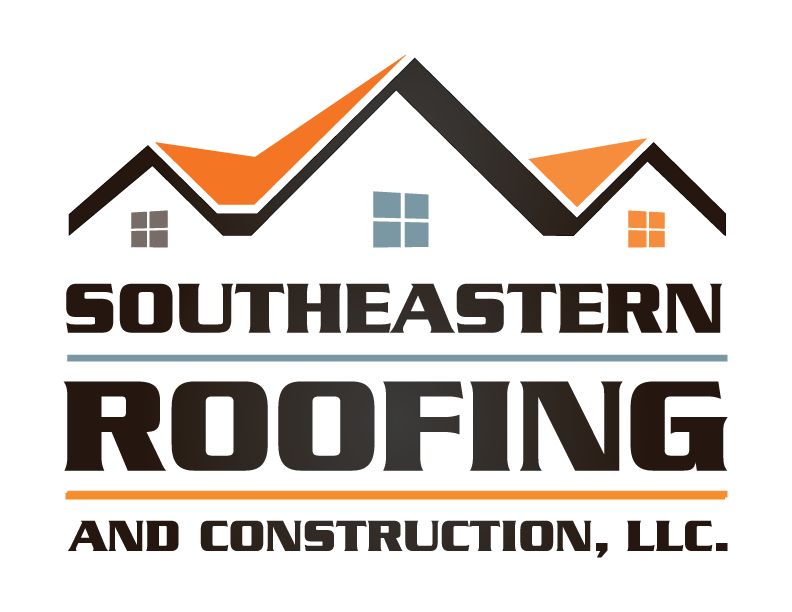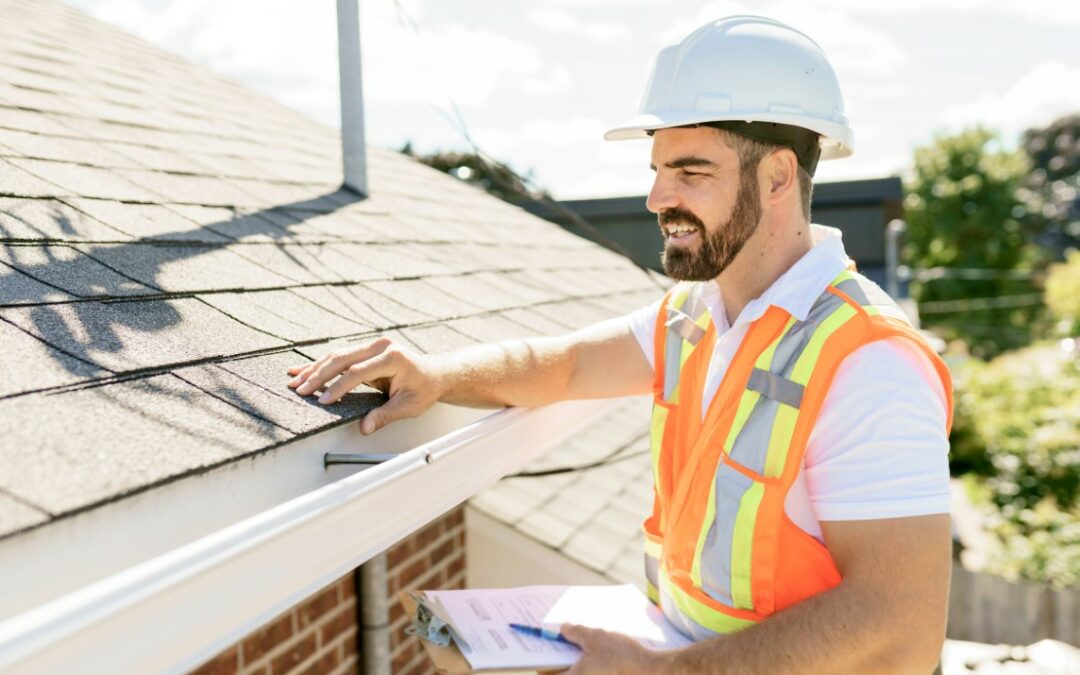Welcome to our comprehensive guide on professional roof inspections for replacement services.
As the saying goes, ‘An ounce of prevention is worth a pound of cure.’ That’s why we must be proactive when it comes to maintaining the integrity of our roofs.
In this article, we will explore the importance of professional roof inspections, how to identify signs of damage and the steps involved in conducting a thorough inspection.
Let’s dive in and ensure our roofs are in tip-top shape for years to come.
Key Takeaways
- Regular professional roof inspections are important to prevent costly roof damage and ensure the roof lasts for its intended lifespan.
- Signs of roof damage to look out for include visible water leaks or stains, missing or damaged shingles, cracked or curling shingles, granule loss, and sagging or drooping areas.
- Hiring a professional roof inspector who is qualified, experienced, and understands different roofing systems and materials is crucial for a thorough assessment and accurate cost estimation for replacement.
- Regular roof inspections help maintain roof integrity, identify and address potential issues early, prevent costly repairs or replacements, and extend the lifespan of the roof.
Roof Inspection Checklist
Let’s go over our roof inspection checklist to ensure a thorough assessment of the condition and identify any necessary replacements.
When it comes to the roof inspection process, it’s crucial to follow a comprehensive checklist to address common roof issues. Firstly, we need to examine the overall condition of the roof, checking for any signs of damage, such as missing or cracked shingles, loose flashing, or sagging areas.
Next, we must inspect the gutters and downspouts for debris buildup or blockages that may hinder proper drainage. Additionally, we should assess the condition of the chimney, vents, and skylights, ensuring they’re in good working order and adequately sealed.
Lastly, we must inspect the attic for signs of water damage or leaks, as this can be indicative of roof issues. By diligently following this roof inspection checklist, we can identify any necessary repairs or replacements and ensure the longevity and safety of your roof.
Importance of Professional Roof Inspections
When it comes to maintaining the integrity of your roof, professional inspections are of utmost importance.
By having regular inspections conducted by qualified professionals, you can prevent costly roof damage before it becomes a major issue.
Additionally, these inspections ensure that your roof lasts for its intended lifespan, providing you with peace of mind and saving you money in the long run.
Preventing Costly Roof Damage
To prevent costly roof damage, professional roof inspections must be conducted regularly. Preventing roof leaks and maintaining the overall integrity of your roof should be a top priority for homeowners.
Regular maintenance is crucial because it allows professionals to identify any potential issues before they escalate into major problems. During inspections, experts will thoroughly examine your roof for signs of wear and tear, such as damaged shingles, loose flashing, or clogged gutters. By addressing these issues promptly, you can prevent water leaks and structural damage that could lead to expensive repairs or even roof replacement.
Investing in professional inspections not only ensures the longevity of your roof but also provides peace of mind knowing that your home is protected from potential costly damage down the line.
Now, let’s move on to the next section about ensuring a long-lasting roof.
Ensuring Long-Lasting Roof
Regular professional roof inspections are essential for ensuring the longevity of your roof and protecting your home from potential damage. By having your roof inspected regularly by a professional, you can ensure that any issues or potential problems are identified and addressed promptly. This not only helps in ensuring the durability of your roof but also allows for timely maintenance and repairs, which can prevent costly damages in the long run.
Professional roof inspections provide a comprehensive evaluation of your roof’s condition, including its structure, materials, and any signs of wear and tear. Additionally, during these inspections, experts can provide you with valuable roof maintenance tips to keep your roof in optimal condition. By following these tips, you can further extend the lifespan of your roof and avoid unnecessary expenses.
Now, let’s delve into the signs of roof damage to look out for, to help you detect any potential issues.
Signs of Roof Damage to Look Out for
During our professional roof inspections, we carefully assess and identify various signs of roof damage that homeowners should be aware of. Understanding the causes of roof damage and recognizing common roof problems is crucial in maintaining the integrity of your roof.
One of the most obvious signs of roof damage is visible water leaks or stains on your ceiling or walls. Additionally, missing or damaged shingles, cracked or curling shingles, and granule loss are all indicators of potential roof damage. Other signs include sagging or drooping areas, excessive mold or moss growth, and clogged gutters.
By being vigilant and spotting these signs early on, you can prevent further damage and costly repairs.
With that in mind, let’s now move on to discussing the steps for conducting a thorough roof inspection.
Steps for Conducting a Thorough Roof Inspection
As we continue our guide on professional roof inspections, let’s now delve into the steps involved in conducting a thorough assessment of your roof. Conducting regular inspections is crucial for identifying and addressing common roof problems before they escalate into costly repairs.
To begin, start by visually inspecting your roof from the ground, looking for any signs of damage such as missing or damaged shingles, sagging areas, or visible leaks. Next, use binoculars to get a closer look at the roof’s condition. Check for cracked or curling shingles, loose flashing, or any signs of water damage. Additionally, inspect the attic for any signs of leaks, water stains, or mold growth.
Lastly, if you feel comfortable doing so, perform a DIY roof inspection by safely climbing onto the roof to check for soft spots, loose nails, or deteriorated sealant. Remember, if you’re unsure about the process or encounter any safety concerns, it’s always best to hire a professional roof inspector to ensure a thorough assessment.
In the next section, we’ll discuss the importance of hiring a professional and the benefits they bring to the inspection process.
Hiring a Professional Roof Inspector
To ensure a thorough assessment, it’s essential to hire a professional roof inspector. The hiring process for a roof inspector requires careful consideration to ensure you find a qualified and experienced individual for the job.
When looking to hire a professional roof inspector, it’s important to consider their qualifications. Look for inspectors who’ve certifications and licenses that demonstrate their expertise and knowledge in the field.
Additionally, experience is crucial when selecting a roof inspector. Look for individuals who have a proven track record of successful inspections and a deep understanding of different roofing systems and materials.
Understanding the Cost of Roof Replacement
When it comes to understanding the cost of roof replacement, several factors need to be considered. Factors such as the size and complexity of the roof, the materials used, and any additional repairs or modifications required can all impact the overall cost.
It’s important to budget for roof replacement by obtaining multiple quotes from reputable contractors and considering any financing options that may be available.
Factors Affecting Replacement Cost
One of the key factors that determine the cost of roof replacement is the number of layers of shingles that need to be removed and replaced. The more layers there are, the more labor and time it will take to complete the job, which can increase the overall cost.
Another factor that affects replacement cost is the type of roofing material being used. Common roofing materials include asphalt shingles, metal, wood shakes, and tile. Each material comes with its price point, with some being more expensive than others.
Additionally, factors affecting insurance can also impact the cost of roof replacement. Insurance companies may consider the age and condition of the roof, as well as the homeowner’s claims history when determining the coverage and cost of replacement.
Understanding these factors can help homeowners anticipate and budget for the cost of roof replacement.
Budgeting for Roof Replacement
We need to understand the cost of roof replacement to properly budget for it.
When it comes to budgeting for roof replacement, one of the key factors to consider is financing options. Roof replacement financing can help homeowners manage the cost of the project by spreading it out over time. It’s important to explore different financing options, such as loans or payment plans, to find the one that best suits your financial situation.
Another aspect to consider is finding affordable roofing contractors. Researching and obtaining multiple quotes from different contractors can help determine the average cost of the project and find the most competitive prices.
Benefits of Regular Roof Inspections for Replacement Services
Regular roof inspections are essential for maintaining the integrity of your roof and ensuring its longevity. By conducting inspections regularly, you can identify and address any potential issues before they escalate into costly repairs or complete roof replacements.
Regular maintenance not only helps to extend the lifespan of your roof but also provides a cost-effective strategy for preventing major structural damage. Through inspections, you can identify and fix minor issues such as leaks, cracks, or damaged shingles, saving you from more extensive and expensive repairs in the future.
Additionally, regular inspections allow you to stay ahead of any potential problems, ensuring the safety and protection of your home and belongings. Don’t underestimate the benefits of regular roof inspections – they’re an investment that pays off in the long run.
Conclusion
Well, after reading this professional roof inspection guide, it’s clear that regular inspections are crucial for replacement services. Who knew there was so much to consider when it comes to roof damage?
It’s ironic how something as seemingly simple as a roof can have so many hidden issues. But with the help of a professional roof inspector, you can ensure a thorough examination and make informed decisions about replacement.
So, don’t overlook the importance of regular inspections – your roof will thank you.

